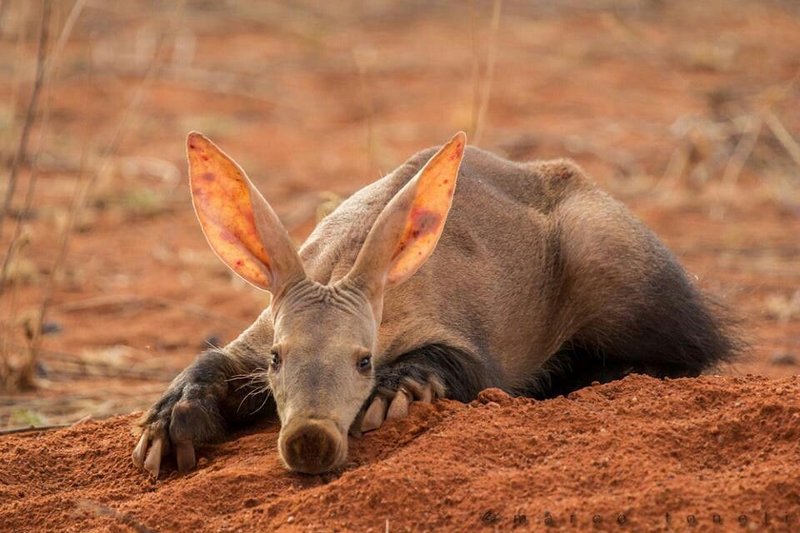
To some, aardvarks may resemble that friendly neighbor who’s a bit odd but harmless. However, like many wild animals, they have their own ways of protecting themselves. Just as you wouldn’t want to mess with a startled hedgehog or approach an angry raccoon, it’s essential to understand how aardvarks behave, especially if you ever find yourself in their habitat.
What Is An Aardvark?
Aardvarks are intriguing creatures that belong to the order Tubulidentata, and they’re the only living species in that group. They’ve adapted beautifully to their environment, primarily focusing on a diet of ants and termites. Picture this: an animal with a long, sticky tongue that can reach deep into insect mounds, skillfully extracting tasty snacks. They can weigh up to 150 pounds and grow up to 5 feet long, including their tail.
You might be wondering where they fit in the animal kingdom. Although they share certain traits with animals like pigs and anteaters, aardvarks are unique enough to stand alone. Their strong claws help them dig and burrow in the ground, providing shelter and protection against threats. But despite their robust appearance, they are generally shy and elusive.
How Do Aardvarks Interact With Humans?
In the wild, aardvarks tend to avoid human interaction. They are primarily nocturnal and prefer to forage for food under the cover of darkness. Imagine walking through a quiet night in Africa and hearing the occasional rustle in the bushes—that’s likely an aardvark going about its dinner time, completely uninterested in humans.
However, when humans encroach on their territory, things can get complicated. Sometimes, aardvarks may find themselves in the middle of agricultural areas where they can nibble on crops, leading to conflicts with farmers. This interaction can make humans view them as nuisances, but it’s essential to remember that most aardvarks would rather keep their distance than confront humans.
Are Aardvarks Aggressive?
You might be surprised to learn that aardvarks aren’t typically aggressive creatures. They’d much rather run away than fight. When threatened, an aardvark has a few defensive tricks up its sleeve. They can dig themselves quickly into the ground, using their impressive claws to escape. That said, if cornered or injured, they may react defensively, similar to a cat when feeling threatened.
Think of it this way: when faced with danger, an aardvark is like a shy kid at a school dance—trying to find an exit rather than pick a fight. In fact, their natural instinct is to use their stealth and digging skills to avoid confrontations altogether.
Potential Risks: Aardvark Defense Mechanisms
While aardvarks aren’t actively looking to harm humans, they do have some defensive mechanisms. Their long claws can deliver powerful swipes if they perceive a threat. It’s kind of like having a sturdy firewall on your computer; it’s there to protect itself, but not meant to attack unless provoked.
Additionally, an aardvark can run surprisingly fast for its size. If it feels cornered, it can bolt away, making it challenging to catch. In most cases, the danger is minimal, but approaching any wild animal, including aardvarks, can lead to unexpected behavior. So, it’s always best to observe from a distance, like watching a nature documentary rather than jumping into the frame.
Health Risks From Aardvarks
While aardvarks themselves aren’t aggressive, they can carry diseases that could pose a risk if you were to come into contact with them. For instance, they’re known to host parasites like ticks, which could potentially transfer to humans if we’re not careful. It’s similar to how domestic animals can sometimes bring pests into our homes.
Moreover, if you’re working in areas close to aardvark habitats, you may be at risk of exposure to zoonotic diseases, which are diseases that can jump from animals to humans. However, the chances of encountering an aardvark and contracting something are pretty low, especially if you maintain a safe distance and respect their space.
So, can the aardvark be dangerous to humans? The short answer is: not really. They prefer to avoid conflict and are generally not aggressive. However, it’s essential to recognize that they are wild animals with their own ways of protecting themselves. Just as you wouldn’t want to provoke a bear or startle a skunk, it’s wise to keep your distance from aardvarks.
By respecting their territory and understanding their behavior, you can appreciate these unique creatures without putting yourself at risk. Whether you’re lucky enough to see one in the wild or just curious about them, aardvarks truly are remarkable animals with a lot to teach us about coexistence. So next time you think of an aardvark, remember—they might be quirky, but they’re not a threat to thoughtful humans who observe from afar.

